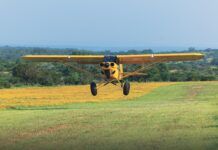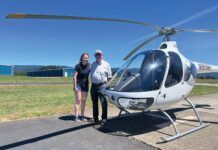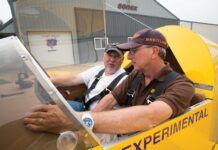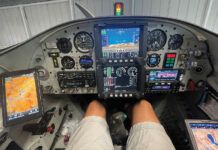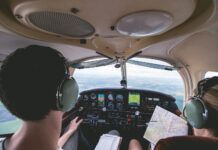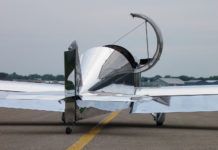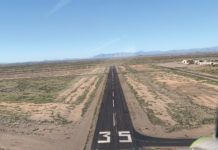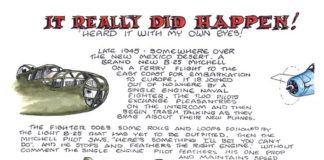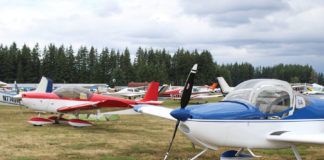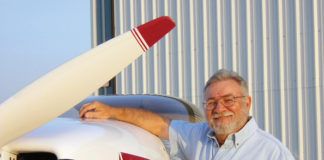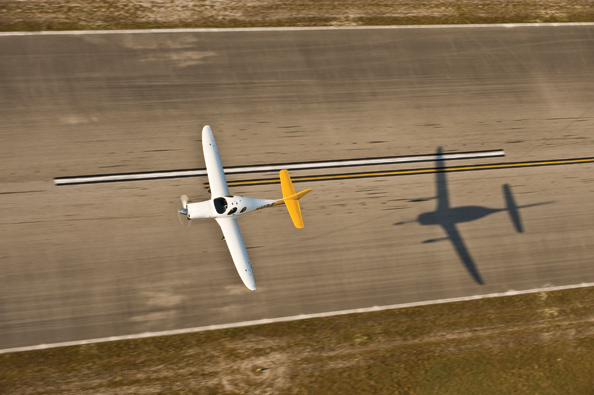
Last month we looked at knocking off the rust that tends to accumulate during the building process off of your flying skills. But what about first flights? The NTSB reports show that pilots make poor decisions when it comes to first flights. This month we go a step further and cut closer to the bone with a discussion about the question that faces every builder: “Am I qualified to test-fly the airplane that I just built in my garage?”
Parents warn their children about the dangers of making important life-changing decisions in the heat of passion. Teenagers on a dead-end country road, at midnight, must have been previously prepared to make sound choices that can have a life-altering impact.
Flying is an emotional business. Good builders and pilots approach it with passion, and kit builders have an even stronger emotional attachment to the flying machines they create. These passionate emotions are powerful, and they are part of what make aviation and aviators special. But sometimes these attributes lead to problems. Like the teenager on that country road, sometimes pilots need to be prepared to make decisions dispassionately, and the first-flight decision is one of those times.
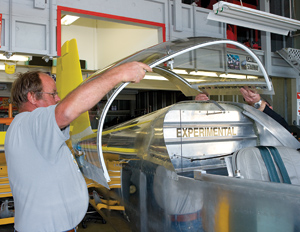
Putting the final touches on your homebuilt is when you need to accurately and honestly assess the risk/reward equation.
If the first flight decision were made purely rationally, few builders would conduct the first flights of their own aircraft. Major airframe manufacturers do not pull the workers from the assembly line to do the first flight tests of an aircraft. They have full-time professional test pilots who perform those duties. Those pilots are highly experienced and specially trained. Many have experienced and dealt with small and large problems. They know the aircraft well, they know how they will react to an emergency, and maybe most importantly, they have little or no attachment to the airplanes they fly.
It is that emotional attachment to the airplane that makes the decision of who should conduct the first flight difficult. But the emotional attachment is not only a problem when making the decision; it may be problematic when things go wrong on the first flight. We’ll discuss that later.
What’s needed is a process to make the decision in a rational way that considers the value a builder derives from making his or her own first flight. If the builder decides to do it, then a plan is needed to prepare for that event.
The Process
The first flight is a high-risk event. Searching the NTSB database for amateur-built aircraft and the key words “first flight” provides all of the evidence needed to understand that things go wrong on first flights. Managing risk is a science, and there are numerous approaches, but a simple method that works well for pilots goes like this:
1. Acknowledge the risk.
2. Rate the risk (on a scale of 1 to 10).
3. Rate the reward (on a scale of 1 to 10).
4. If the risk outweighs the reward, STOP, change the scenario, and go back to Step 1.
5. If the reward outweighs the risk, have a discussion among experts and peers to mitigate the risks as much as possible or practical, and proceed with caution.
This process sounds pretty simple, but just like a teenager on a lonely country road, it needs to be made before a sexy, newly completed airplane is sitting in the hangar with a brand new airworthiness certificate hanging on it. Some “parental guidance” is warranted. This guidance can come in the form of the EAA Flight Advisor Program or someone trustworthy with the personal integrity to tell the truth.
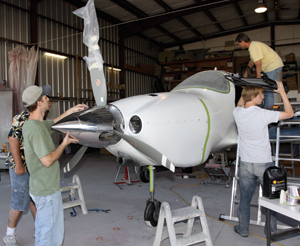
External forces might be pushing you toward first flight, but the real pressure will come from within. Slow down, think, and then think some more before making a decision.
Acknowledge the Risk
The logical first question is: “Am I qualified to make the first flight?” It is imperative to acknowledge the risk and consider the alternatives. The risk is multifaceted, but a common thread in the accident reports is: First there is a problem, big or small, and it is not handled correctly.
Why does the person who built the airplane, and who knows it better than anyone, fail to deal with a problem correctly? This is where the emotional attachment to the airplane discussed earlier becomes a factor. When faced with an engine failure after takeoff, a qualified test pilot will, without hesitation, sacrifice the airplane with a survivable off-airport landing. A builder will be more inclined to attempt a turnback with a predictable-most often fatal-result.
The test pilot has another advantage: excess mental capacity. Rogers Smith, a world-renowned jet fighter test pilot for the U.S., Canadian and German Air Forces, as well as other private entities, talks about the importance of developing excess mental capacity. When a problem occurs, the pilot has to be able to recognize the problem, fly the airplane and respond appropriately. That ability to overcome the natural tendency toward tunnel vision comes from years of experience and exposure to small and large problems in flight.
Rate the Risk
To accurately rate the risk requires comparing the capabilities of the builder with those of the would-be test pilot. That means considering the question, “If not me, then who?”
Conducting the first flight of a well-developed design like an RV does not require the same skill set as conducting the first flight of the F-35 Joint Strike Fighter. And the first flight in a Cuby is different from the first flight of a Lancair Turbine Evolution. All of these factors need to be considered to determine the skill set required. There is no textbook answer, but first flight requires a higher standard than a builder with limited flying experience, little or no time in type, and who has spent the last four years pounding rivets instead of flying.
Write the resume, either mentally or on paper, of the pilot who would be qualified to conduct the first flight of your new baby if you could not. What qualifications would you look for?
A first-flight pilot needs to be a calm person with good judgment. Good candidates will have a methodical and deliberate approach to all aspects of aviation. They will have a diverse background in aviation with previous, if not extensive, experience in the particular type or a similar one.
Good candidates also have experience with in-flight emergencies, and they not only know what to do, but also know how they react under pressure. No one knows exactly how he will react to a high-stress situation until tested. Some pilots perform better, some fall apart, and others lock up and do nothing. A pilot who has previously brought a broken airplane home has the best chance of bringing himself, and your airplane, back if something goes horribly wrong on the first flight.
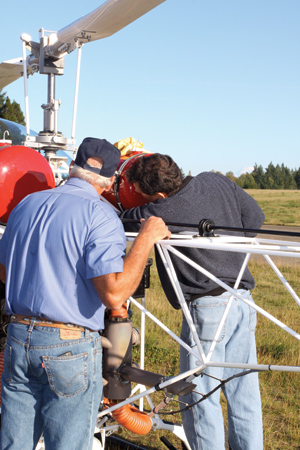
Two sets of hands for the first-flight inspection is always good. But make your advocate work for you-will he tell you if you’re truly ready?
Selecting the environment for a flight test is also a critical part of the process, and it factors into rating the risk. If one end of the airport is wide-open space and the other is an industrial park, the right pilot will have the patience and discipline to wait for a day when the wind favors the better option. The balance between the pride of bringing a broken airplane home and the willingness to trade the airplane for your life is a tough call. When the unthinkable occurs, decisions must be made in a millisecond with all of the obvious consequences.
With the help of an EAA technical advisor, or trusted peers, compare your capabilities to those of the pilot you would choose if you were unable to do the first flight yourself. Based on that comparison, boil it down to a number between 1 and 10.
Rate the Reward
What about the reward? The first flight of a new airplane is a big day in the life of a builder. Pilots often refer to their airplanes as their “baby.” It is totally understandable that a builder would want to experience the first flight.
But if the builder has the ability of a steely eyed test pilot to compartmentalize his emotions and treat the airplane like a disposable beer can that will be sacrificed in a heartbeat to save himself, should he allow himself to feel the emotions associated with flying his new airplane the first time?
The reward question is not: “What’s the reward of the first flight?” Obviously there is tremendous reward in that experience. Instead, the salient question is: “What’s the additional reward of flying it myself, versus watching a qualified test pilot fly it?” Not to minimize making a first flight in any way, but who flies it is not as important as the fact that the airplane you built in your garage flew. Boil it down to a number.
The process leads to a simple logical expression. If the risk is greater than the reward, then find a test pilot; else, begin a personal journey that will bring your skills to the level required of a first flight test pilot.
The risk exceeds the reward. Finding a pilot who meets the criteria described above will take some time, so don’t wait until you are ready to fly to start the search. The ideal person may be a local pilot with the appropriate experience. If not, there are several resources to explore. Kit manufacturers often have factory-approved test pilots who will provide transition training and first-flight services. Type clubs or Internet bulletin boards are also great places to find and learn about pilots who are offering those services. If you’re considering an unknown pilot, excellent references are critical.
The reward exceeds the risk. If after careful consideration with the concurrence of a trusted advisor, it’s concluded that the builder is qualified, or can become qualified to make the first flight, then the builder needs to develop the skills, proficiency and a plan that results in a successful first flight.
Proficiency is an issue for all pilots, but those planning a first flight need to be very current and comfortable in the air. There is no magic formula, but this means flying as much as possible, and the more different types the better. Flying numerous types moves a pilot from thinking about what his hands are doing to thinking about what the airplane is doing. These are the people who fly airplanes like the wings are part of their body.
Developing a plan is beyond the scope of this article, but the first flights should be part of a larger plan that determines that the airplane is safe and predictable throughout its flight envelope. No matter who makes the first flight, it needs to be only one part of a larger plan.
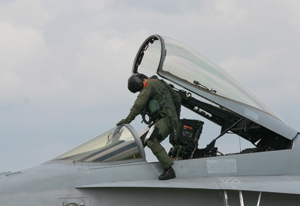
You don’t need to take a fighter pilot’s perspective of first flights-it’s not wartime, and the decision should be rational rather than emotional.
The Skills Required
That leaves the skills. These three categories capture the most common types of accidents: partial or total power loss, trim/flight-control issues and inappropriate response to non-critical issues that results in an accident.
Fuel starvation is the cause of many aircraft accidents. On first flights, it’s uncommon to run out of gas-fuel exhaustion-but far more common for the fuel not to make it to the engine. Removing the fuel line from the carburetor or injector servo and using gravity or the boost pump to dispense 5 gallons into a bucket before the first flight would eliminate many of the first flight engine failures caused by fuel-system design and vent issues. (Plus, you were supposed to run a thorough fuel-flow test before first flight, remember?) But there are other reasons why engines quit and why all pilots should be prepared to deal with engine failures. First-flight pilots should plan for it.
If engines failed regularly like they did in the early years of aviation, it would impact our flight planning. We would choose our airports and runways carefully, and we would make sure that we were proficient in deadstick landings. Perhaps most importantly, we would settle once and for all the turnback after takeoff controversy.
A well-planned and properly executed takeoff can minimize or even eliminate the window on takeoff where there are no good options. This means having a predetermined plan along with the skill to pull it off no matter where the engine quits. This presumes the pilot has the ability to consistently perform power-off spot landings, and the discipline to lower the nose and spot-land the airplane in a tight space off the end of the runway, driving it into a fence at minimum speed rather than precipitating a stall-spin accident in a turn-back or a downwind crash after a 180 turn once the runway is unreachable.
When the first flight has reached the point abeam the runway on downwind, any concern about engine failure should be gone; from this point on a deadstick landing on the runway should be a non-event. The rest of the first flight and the landing pattern should never venture beyond the pilot’s ability to glide the airplane to the runway.
Total power losses are easy. Lower the nose, pick the spot and, time permitting, complete the engine failure memory items. Partial power loss poses a judgment call: try to stagger around the pattern or land straight ahead? There is no textbook answer, and it boils down to, well, judgment. The question is: “Is the airplane sustaining energy, airspeed and altitude with enough excess to complete the maneuvering needed to end up on the airport?”
For the pilot preparing for a first flight this means lots of simulated flameout approaches in various configurations, learning how to sense the energy state of an airplane and learning to quickly perceive whether the energy state is increasing or decreasing relative to a spot on the ground. It also means spending some time surveying the area around the airport for every suitable spot of dirt that could be used for a landing if necessary. A first-flight pilot should have a skill level that makes a deadstick landing from over the airport a non-event.
Battling Control Issues
Flight-control and trim issues can range from an airplane with a heavy wing, or an aft center of gravity, to a jammed or disconnected primary control surface.
Heavy wings are common and are more of an annoyance than an emergency. Incorrect CG calculations can result in handling difficulties, aft CG being the most common issue, resulting in an unstable but highly controllable airplane. Controllability sounds like a good thing, but too much of it can result in pilot-induced oscillations (PIO). At the very least, the result is an airplane that is very “sporty” to fly. A qualified first-flight pilot needs to understand that moving the center of lift aft will improve the handling characteristics. Flying faster will accomplish this, but sooner or later a landing is inevitable, and if burning fuel moves the CG farther aft, waiting to build up courage will only make it worse. When the landing must be made, a small amount of down elevator trim can be used to take the slack out of the control linkages and reduce the chances of PIO. Some experience flying aircraft with light control pressures at or near their aft-CG limit is good preparation.
Jammed or disconnected flight controls are every pilot’s worst nightmare. Yet, it’s important to note that numerous pilots have survived these events. Nothing can fully prepare a pilot for a flight-control problem, but some time spent flying with only two of the three primary flight controls and learning how each control input, and power, affects the other axes is good practice. Flying low approaches using only elevator trim, power and flaps for pitch control is far better training than reading about it in the Pilot’s Handbook of Aeronautical Knowledge.
Sometimes flight-control problems leave no alternative but to abandon the aircraft. Wearing a parachute makes this possible, but a parachute without the willingness and training to use it is little more than an expensive, and uncomfortable, seat cushion.
Finally, a pilot must be conditioned to avoid overreacting to a small emergency. This is a tougher skill to reduce to a drill and simulate, and this is where that excess mental capacity Rogers Smith talks about is needed to accurately assess the situation. Oil on the windscreen is distracting, and a one-quart oil leak will make an enormous mess on an airplane. But panicking because of it, and then rushing back to a bad approach with poor visibility through an oily windshield has unnecessarily resulted in first-flight fatalities.
All of this conditioning is about expanding a pilot’s base of experience to improve the odds of responding correctly to a problem on a high-risk flight. And it’s also about having the ability to compartmentalize emotions and see the airplane as the precursor to a beer can. Admittedly, any of these problems could occur on any flight, and they do, too often with bad outcomes.
If a builder is not ready to make the commitment to acquire the skills needed to be ready when something goes wrong on a first flight, then the right thing to do is to make a rational decision instead of an emotional one and choose someone who is qualified.
Just like our teenager, the builder needs to make a sensible decision about the appropriate person, at the appropriate time, with the appropriate preparation. Get that right, and it will be a wonderful flight.

